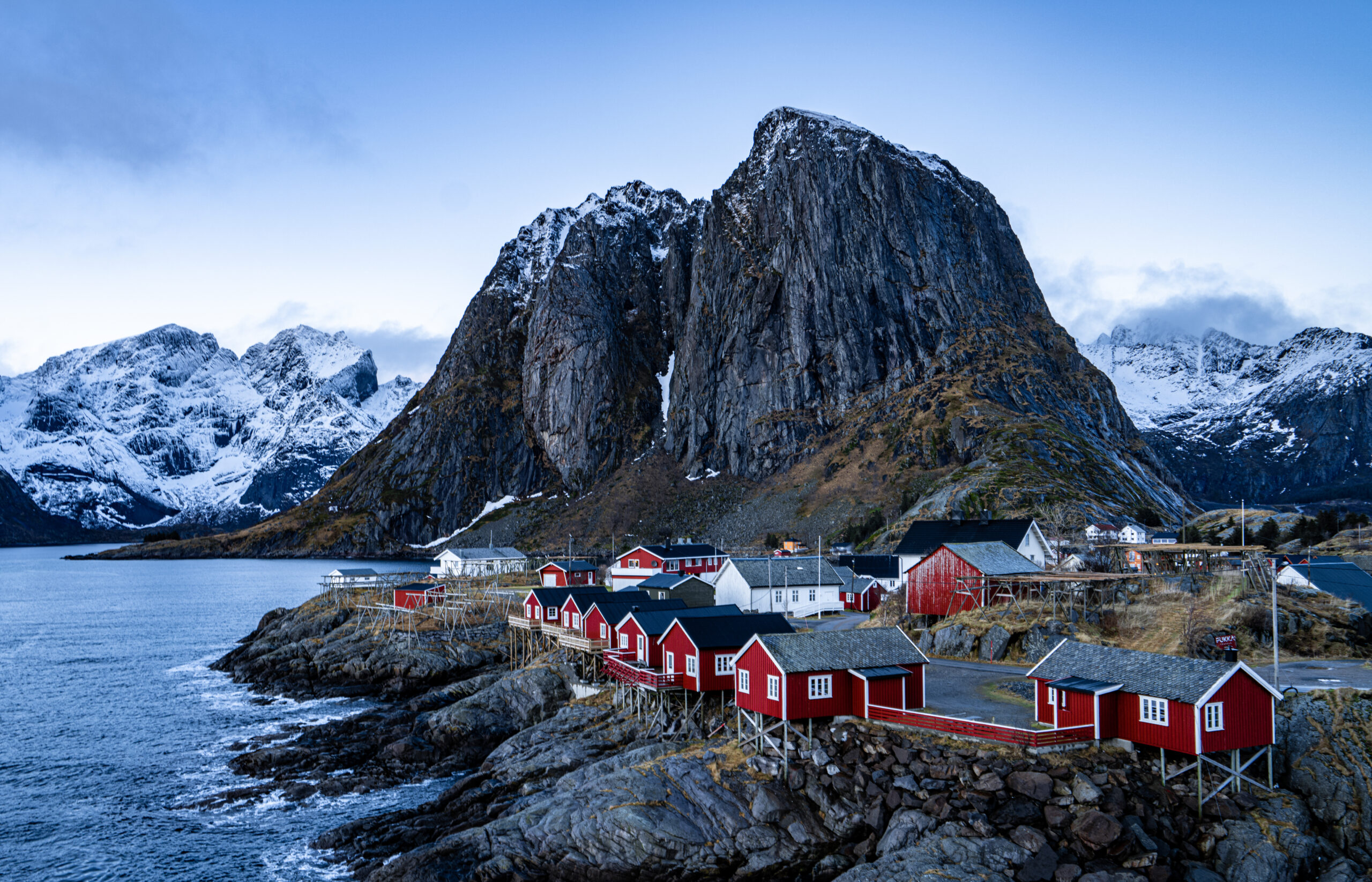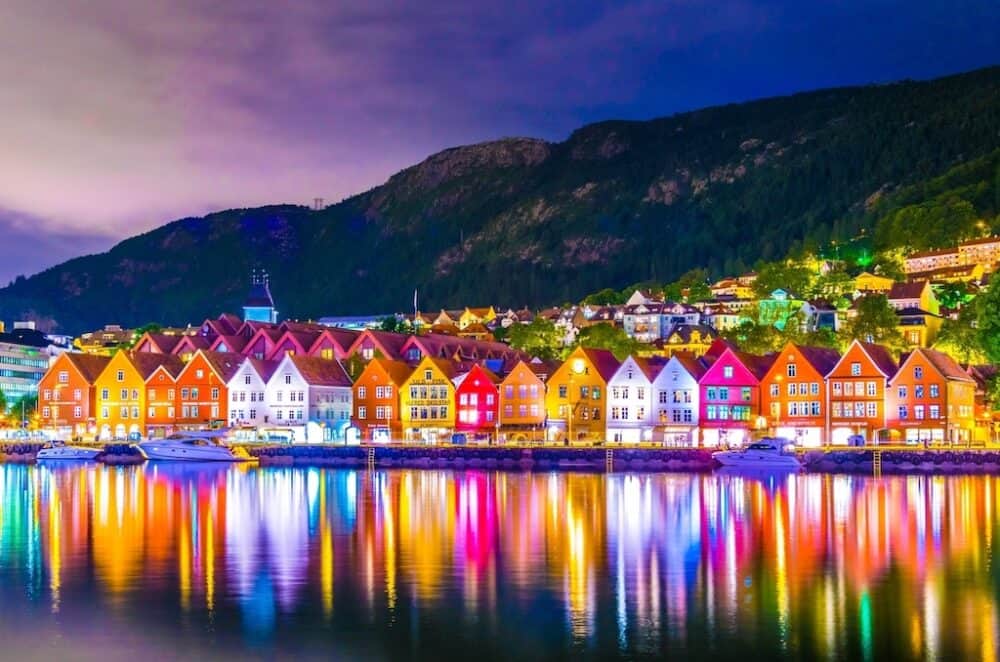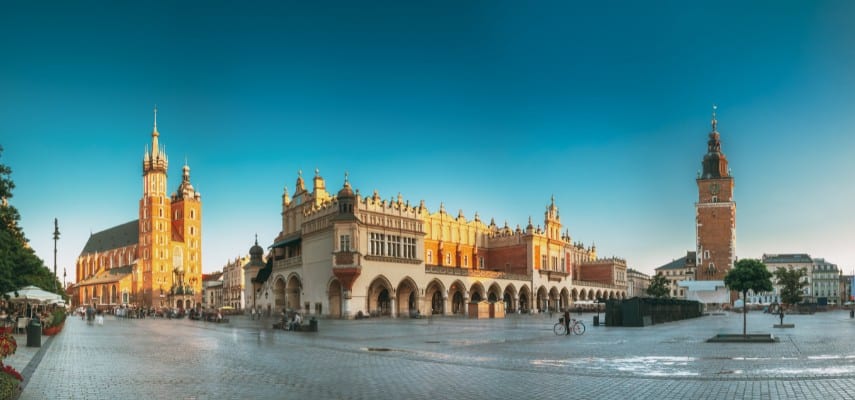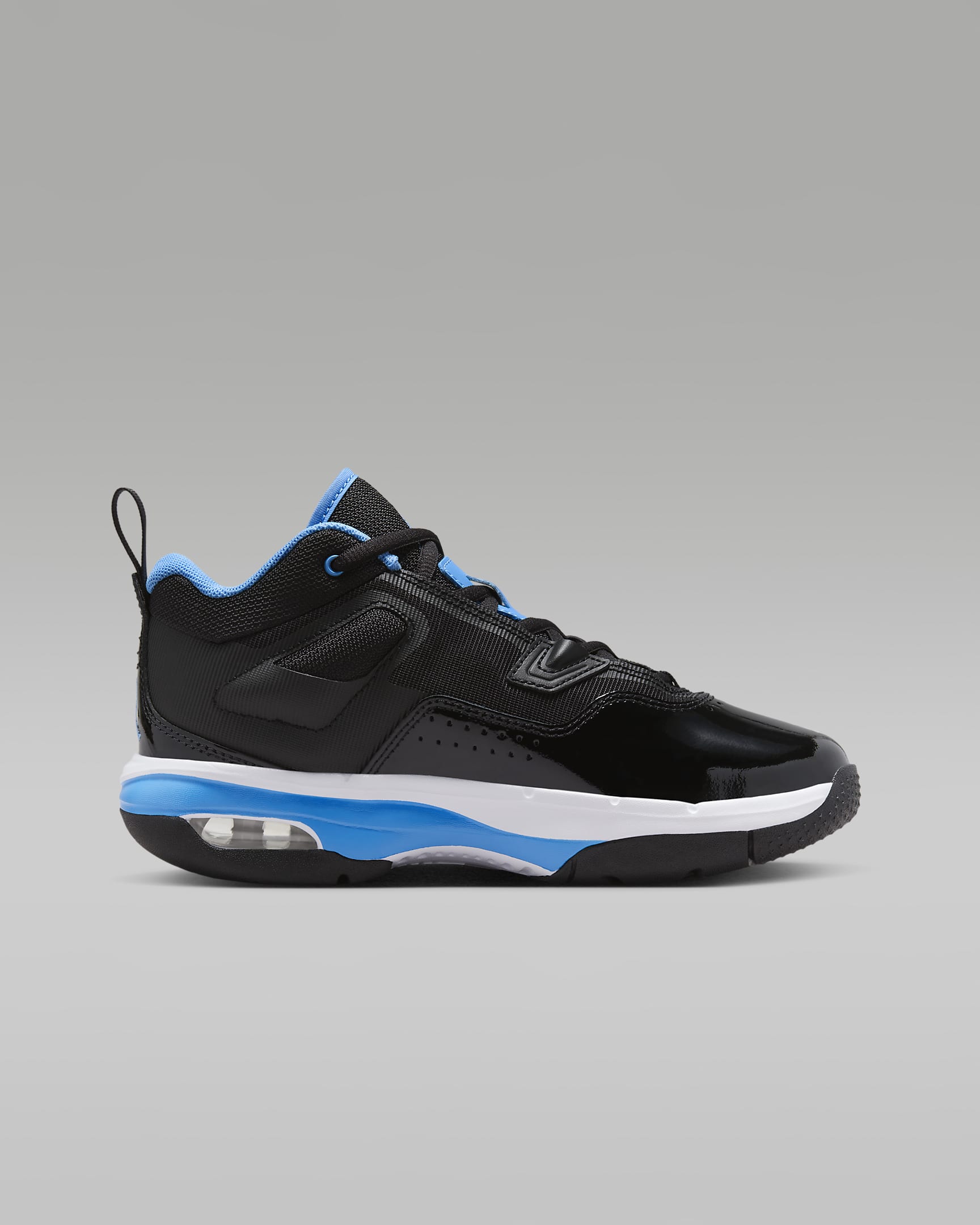
Norway, a nation sculpted by ancient glaciers and kissed by the Arctic sun, stands as a testament to nature’s raw power and ethereal beauty. From its dramatic fjords plunging into turquoise waters to its vibrant cities humming with modern life, and from the mystical dance of the Northern Lights to the perpetual daylight of the Midnight Sun, Norway offers an unparalleled travel experience. This guide will walk you through everything you need to know to plan an unforgettable journey to this Scandinavian gem, covering its top attractions, rich history, essential travel tips, accommodation, transportation, and the best time to visit.
Getting to the Land of the Vikings
Traveling to Norway is generally straightforward, thanks to its well-connected infrastructure. Most international visitors arrive by air.

Related Articles about Norway: A Land of Fjords, Northern Lights, and Unforgettable Adventures:
- Vancouver: A Symphony of Nature and Urbanity – Your Ultimate Guide to the Emerald City
- España: A Tapestry of Sun, Sangria, and Centuries of Stories – Your Ultimate Travel Guide
- Unveiling the Dragon: A Journey Through China’s Top Attractions
- Busan Beckons: A Symphony of Sea, Culture, and Culinary Delights
- Whispers of the Incas: Unveiling the Majesty of Machu Picchu
By Air:
Oslo Gardermoen Airport (OSL) is Norway’s largest and busiest international airport, serving as the primary hub for flights from around the world. Other major international airports include Bergen Airport, Flesland (BGO), and Trondheim Airport, Værnes (TRD), which also handle direct flights from various European cities. Several airlines, including SAS, Norwegian, and Widerøe (for domestic connections), operate within Norway and internationally.
By Sea:
For a more scenic approach, ferries connect Norway with neighboring countries. Regular services operate from Denmark (Copenhagen, Hirtshals, Frederikshavn) and Germany (Kiel) to Norwegian ports like Oslo, Bergen, Stavanger, and Kristiansand. These overnight journeys offer comfortable cabins and an early taste of Norway’s coastal charm.
Entry Requirements:
Norway is part of the Schengen Area, meaning visitors from most EU countries, the UK, the US, Canada, Australia, and New Zealand do not require a visa for stays up to 90 days within a 180-day period. However, a valid passport with at least six months of validity beyond your intended departure date is essential. Always check the latest visa requirements based on your nationality before traveling.
A Glimpse into Norway’s Rich History
Norway’s history is as dramatic and captivating as its landscapes, profoundly shaping its culture and identity.
The Viking Age (800-1066 AD) is arguably Norway’s most famous historical period. Norwegian Vikings were intrepid explorers, traders, and warriors who ventured across the North Atlantic, discovering Iceland, Greenland, and even reaching North America (Vinland). Their legacy is visible in archaeological sites, sagas, and the enduring spirit of adventure.

Following the Viking Age, Norway entered a period of unions with its Scandinavian neighbors. From the late 14th century, it was part of a personal union with Denmark, lasting over 400 years. This period saw the gradual decline of Norwegian independence and language, with Danish becoming the dominant administrative and literary language. After the Napoleonic Wars, Norway was ceded to Sweden in 1814, entering a new union that granted it greater autonomy.
Full independence was finally achieved in 1905, a pivotal moment that sparked a fervent national identity. The 20th century saw Norway navigate two World Wars, enduring German occupation during WWII. Post-war reconstruction was followed by a transformative discovery in the late 1960s: vast offshore oil and natural gas reserves. This resource wealth propelled Norway to become one of the world’s richest and most developed nations, allowing it to invest heavily in social welfare, infrastructure, and environmental protection.
Today, Norway proudly maintains its constitutional monarchy, vibrant democracy, and a strong commitment to peace, human rights, and sustainable living, all while preserving its unique cultural heritage deeply rooted in its Viking past and its profound connection to nature.
Unforgettable Attractions: Norway’s Crown Jewels
Norway’s allure lies in its stunning natural beauty and fascinating cultural sites. Here are some of its top attractions:
The Fjords: The undisputed stars of Norway’s landscape are its majestic fjords, carved by ancient glaciers.
- Geirangerfjord and Nærøyfjord: Both UNESCO World Heritage Sites, these are quintessential Norwegian experiences. Cruise through their narrow passages, flanked by towering cliffs, cascading waterfalls (like the Seven Sisters), and tiny, often abandoned, farmsteads clinging precariously to the mountainsides.
- Pulpit Rock (Preikestolen): A flat-topped cliff soaring 604 meters above Lysefjord, offering breathtaking panoramic views after a moderately challenging hike.
- Kjeragbolten: For the truly adventurous, this boulder wedged precariously between two cliffs above Lysefjord offers an exhilarating (and terrifying) photo opportunity.
Vibrant Cities: Norway’s cities offer a blend of history, culture, and modern design.
- Oslo: The capital boasts an impressive array of attractions. Explore the historic Akershus Fortress, wander through the whimsical sculptures of Vigeland Park, marvel at the futuristic Oslo Opera House, or immerse yourself in art and history at the National Museum. The new Viking Age Museum (opening in 2026/2027) will house the famous Viking ships and artifacts.
- Bergen: Known as the "Gateway to the Fjords," Bergen is famous for its colorful Hanseatic wharf, Bryggen (a UNESCO site), its bustling Fish Market, and the scenic Fløibanen funicular, offering stunning views of the city and surrounding mountains.
- Trondheim: A historic city in central Norway, home to the magnificent Nidaros Cathedral, Norway’s national sanctuary and a masterpiece of Gothic architecture. Don’t miss the picturesque wooden houses of Bakklandet and the Old Town Bridge (Gamle Bybro).
- Tromsø: Located deep within the Arctic Circle, Tromsø is a prime spot for experiencing the Northern Lights in winter and the Midnight Sun in summer. Visit the iconic Arctic Cathedral and explore its polar history.
Arctic Wonders:
- Lofoten Islands: An archipelago of dramatic peaks, turquoise bays, and picturesque fishing villages (rorbuer) like Reine and Hamnøy. It’s a haven for photographers, hikers, and sea kayakers, offering spectacular scenery year-round.
- North Cape (Nordkapp): The northernmost point of mainland Europe, where you can witness the Midnight Sun during summer and often encounter reindeer. It’s a truly epic journey to the edge of the world.
Cultural and Historical Sites:
- Stave Churches: These unique medieval wooden churches, built with intricate carvings and dragon-head ornamentation, are architectural marvels. The Urnes Stave Church (UNESCO) and Borgund Stave Church are among the best-preserved examples.
- Atlantic Ocean Road (Atlanterhavsveien): A spectacular stretch of road connecting islands with a series of bridges that twist and turn across the ocean, often described as the "road to nowhere."
Navigating Norway: Transportation within the Country
Getting around Norway is efficient, though distances can be vast. A combination of transport modes often yields the best experience.
Flights: For covering long distances quickly, domestic flights are invaluable. SAS, Norwegian, and Widerøe connect major cities and even remote towns like those in Lofoten.
Trains: Norwegian trains offer incredibly scenic journeys. The Bergen Line (Oslo to Bergen) is one of the world’s most beautiful train rides, traversing mountains, fjords, and high plateaus. The Flåm Railway, a branch of the Bergen Line, is another engineering marvel, descending steeply through stunning landscapes to the Sognefjord.
Buses: An extensive bus network covers areas not served by trains, particularly in rural and fjord regions. They are a reliable and often cost-effective way to reach smaller towns and trailheads.
Ferries and Boats: Essential for experiencing the fjords and islands. Local ferries connect communities across the fjords, while the iconic Hurtigruten coastal express sails almost the entire length of Norway’s coast, serving 34 ports and offering a blend of cargo, local transport, and tourist cruises.
Rental Cars: Renting a car provides flexibility to explore at your own pace, especially in regions like the Lofoten Islands or along scenic routes. Be prepared for narrow, winding roads, toll fees, and potentially challenging winter driving conditions. Fuel can also be expensive.
Cycling: Norway is increasingly popular for cycling, with many designated routes and stunning scenery, particularly in the summer months.
Finding Your Norwegian Home: Accommodation Options
Norway offers a diverse range of accommodation to suit every budget and style of travel.
Hotels: From international chains in major cities to charming boutique hotels in smaller towns, you’ll find comfortable options with varying price points. Scandinavian design often features clean lines and a focus on natural light.
Cabins (Hytter): A quintessential Norwegian experience. These self-catering cabins, ranging from rustic to luxurious, are popular among locals and tourists. They offer great value, especially for families or groups, and are often located in scenic areas, perfect for hiking or skiing.
Guesthouses and B&Bs: Offering a more personal touch, these often provide a cozy atmosphere and local insights.
Hostels: Budget-friendly hostels are available in cities and popular tourist areas, often offering both dormitory beds and private rooms. They’re a great way to meet fellow travelers.
Camping: Norway’s "Allemannsretten" (Right to Roam) allows wild camping almost anywhere for up to two nights, provided you respect nature and leave no trace. Numerous organized campsites also offer facilities for tents, caravans, and often have cabins for rent.
Rorbuer: Particularly iconic in the Lofoten Islands, these are traditional fishermen’s cabins, often built on stilts over the water. Many have been renovated into comfortable, charming accommodations, offering an authentic experience.
Unique Stays: Look out for glamping sites, treehouses, or even lighthouse stays for an unforgettable night.
When to Visit: Seasons and Experiences
Norway transforms dramatically with each season, offering distinct experiences.
Summer (June – August):
- Pros: Longest days (Midnight Sun north of the Arctic Circle), warmest temperatures (though still mild), ideal for hiking, fjord cruises, cycling, and outdoor activities. All roads and attractions are open.
- Cons: Peak tourist season, meaning larger crowds and higher prices for flights and accommodation.
Autumn (September – October):
- Pros: Fewer crowds, vibrant fall foliage, crisp air perfect for hiking, and the start of the Northern Lights season in the north. Good shoulder season value.
- Cons: Temperatures drop, some remote roads or services might start to close towards late October.
Winter (November – March):
- Pros: The best time for Northern Lights viewing (especially December-February), skiing and winter sports, dog sledding, snowmobiling, and a magical, festive atmosphere.
- Cons: Short daylight hours (Polar Night in the far north), very cold temperatures, some roads may be closed due to snow, and fewer daylight activities.
Spring (April – May):
- Pros: Blossoming fruit trees in the fjords, melting snow creating spectacular waterfalls, fewer crowds than summer, and improving weather. Good value in the shoulder season.
- Cons: Weather can be unpredictable, and some higher-altitude hiking trails may still be snow-covered.
Essential Travel Tips for a Smooth Journey
To make your Norwegian adventure as enjoyable as possible, keep these tips in mind:
Cost of Travel: Norway is renowned for being an expensive country. Budget carefully. Eating out frequently can be costly; consider self-catering (buying groceries from supermarkets like Kiwi, Rema 1000, or Coop) or packed lunches. Look for accommodation with kitchen facilities.
Packing: Layers are key, regardless of the season. Always bring waterproof and windproof outer layers, good walking shoes or hiking boots, and warm clothing, even in summer. For winter, thermal underwear, a thick jacket, hat, gloves, and waterproof boots are essential.
Currency: The official currency is the Norwegian Krone (NOK). Credit and debit cards are widely accepted almost everywhere, even for small purchases. Cash is rarely needed but can be useful for very small vendors or remote areas.
Language: Norwegian is the official language, with two written forms (Bokmål and Nynorsk). However, virtually all Norwegians speak excellent English, especially younger generations and those in the tourism industry, so communication is rarely an issue.
Safety: Norway is one of the safest countries in the world with very low crime rates. However, exercise normal precautions, especially in crowded areas. Be mindful of nature’s power – sudden weather changes in the mountains and cold waters can be dangerous if unprepared.
Etiquette: Norwegians are generally reserved but friendly. Punctuality is appreciated. Respect for nature is paramount – follow "Allemannsretten" guidelines (leave no trace, don’t disturb wildlife, close gates behind you).
Tipping: Tipping is not mandatory in Norway as service charges are usually included. However, rounding up the bill or leaving a small tip (5-10%) for exceptional service in restaurants or taxis is appreciated.
Wi-Fi and Connectivity: Wi-Fi is widely available and generally excellent in hotels, cafés, and public areas. Mobile coverage is also very good, even in many rural areas.
Sustainability: Norway is very environmentally conscious. Try to minimize your impact, follow marked trails, and dispose of waste responsibly.
Norway is more than just a destination; it’s an experience that awakens the senses and rejuvenates the spirit. Whether you seek thrilling outdoor adventures, a deep dive into Viking history, or simply the serene beauty of its untouched wilderness, Norway promises a journey filled with awe-inspiring moments and cherished memories. Start planning your Norwegian odyssey today, and prepare to be enchanted by a land truly unlike any other.





